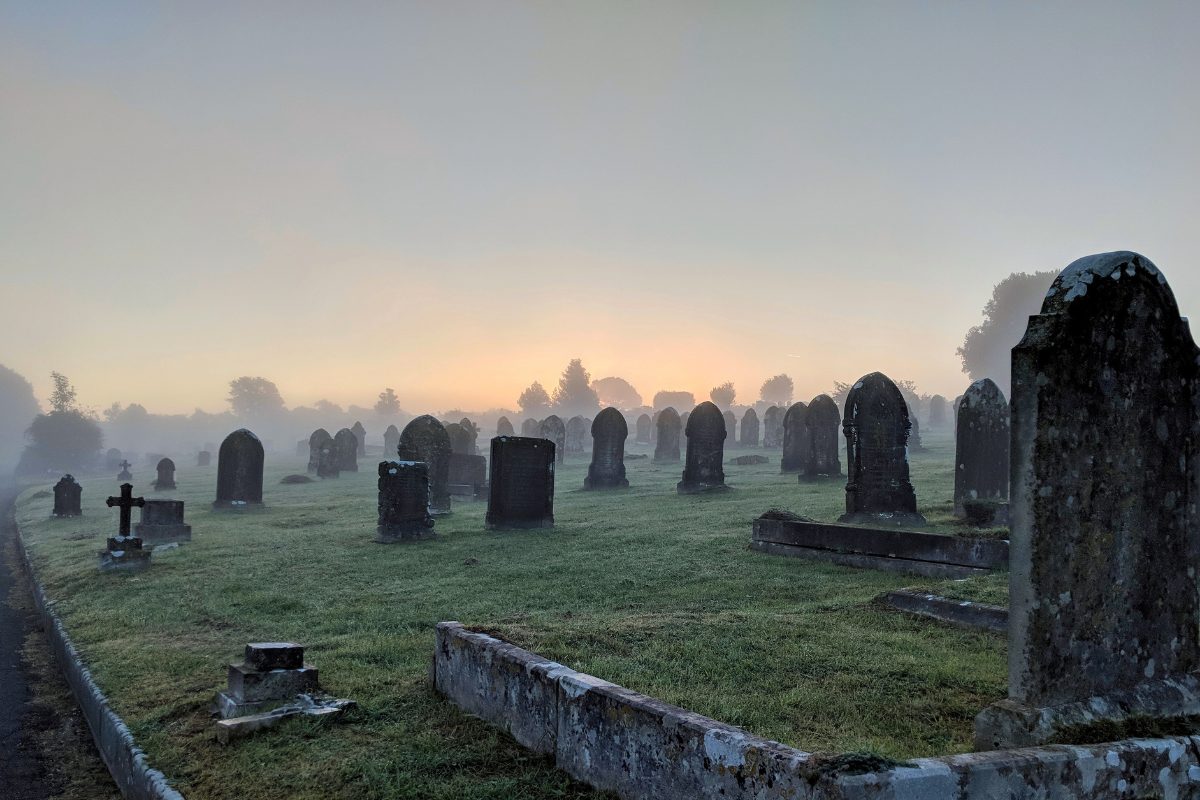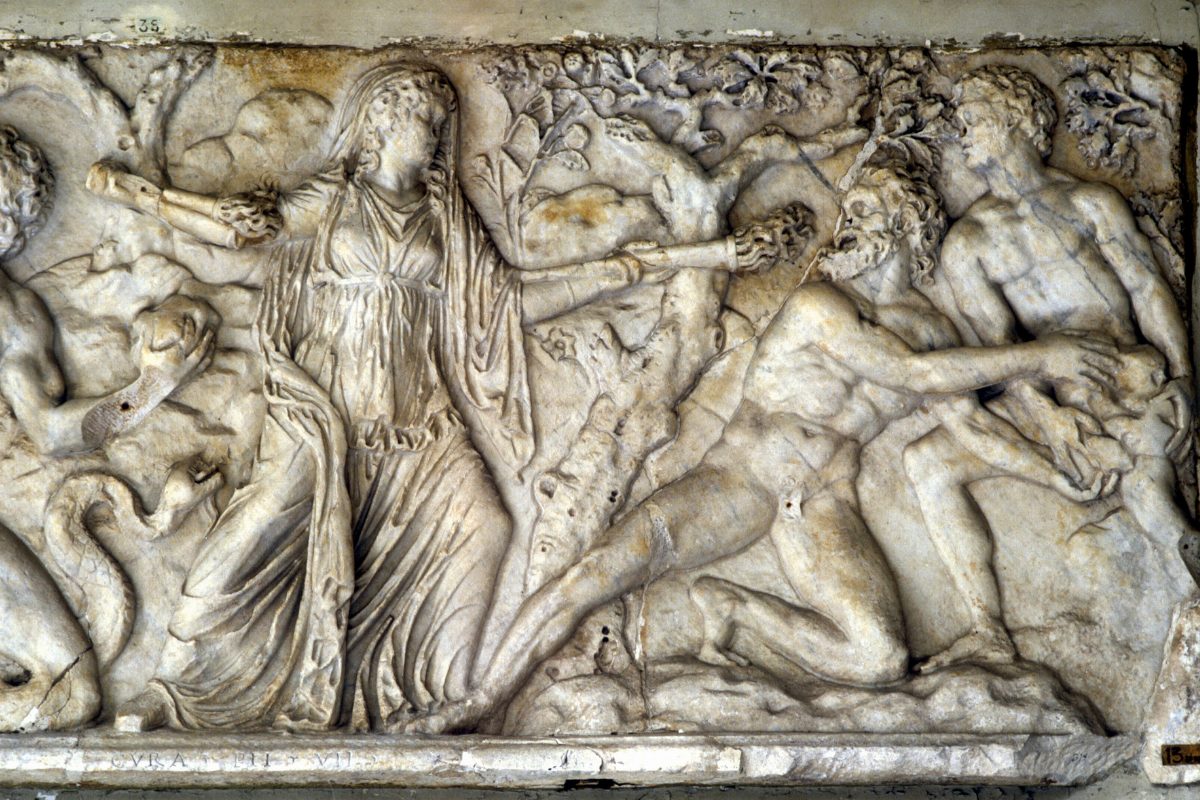Who is Hekate? What is she a goddess of? How do we worship her? I see people ask these questions every day. Since I’m dedicating the month of October to Hekate, I’ll share my understanding of this mysterious goddess and how I approach her.
Keep in mind that Hekate is ancient and was widely worshipped. Her cult had local variations, and the literature about Hekate spans two thousand years. Many contemporary books and papers have been written about Hekate.
Hekate remains a popular goddess in contemporary Paganism and Witchcraft. Because of her long, complex, and diverse history, Hekate can seem enormous when we learn about her today, like a goddess of everything. This leads to a tremendous amount of variety in contemporary perspectives and worship.
In Hekate: An introduction to the goddess of the crossroads, I offered a summary of what I think are some of the most important things to know about this complicated goddess when you’re getting to know her. This article summarises popular approaches to the worship and magick of Hekate.
The goddess of the crossroads
Hekate is essentially a liminal figure. She is a crosser of boundaries and is repeatedly associated with “between” states. Hekate crossed the Titan and Olympian regimes, the realms between the mortal and divine, and the living and the dead. Her liminality is seen in her iconography, many epithets, and places of worship such as borders, crossroads, city walls, and doorways.
Hekate’s liminality is the focus of my devotion to her. The Crossroads is my preferred symbol for the liminal spaces that Hekate occupies. I enjoy mystery and am comfortable with life’s ambiguity. It can be scary to stand at the threshold between a previous structure and a new way, but the dissolution creates a fluidity that enables a new construction. That fluid space, full of possibility, is exciting.
If it feels like Hekate’s presence waxes and wanes, it isn’t because she moves closer and further away. It’s because we step in and out of the “between” space she inhabits. We experience it more than we might realise. Liminal experiences include rites of passage such as initiations; events that change the course of our lives such as birth, moving, divorce, job loss, illness, death; and sudden events and shifts in society such as natural disasters, wars, and political instability. Some people, such as immigrants and religious, ethnic, sexual, and gender minorities, may frequently find themselves in a liminal space.
When we can see the liminality of social, cultural, and political shifts and how minorities and other marginalised people regularly cross boundaries, we can understand why Hekate takes on a political role for some contemporary devotees. Her place of worship, the crossroads, was historically associated with the poor. The Greek statesman and orator Demosthenes (384-322 BC) wrote, “Once every month, at the time of the new moon, dishes of food were set out for Hekate in the evening at the places where three roads met; and the food thus offered was not infrequently eaten by poor people.”
Hekate is the goddess of the place where a new direction becomes possible.
A goddess of the Underworld

One of the borders that Hekate crosses is that between the living and the dead. Hekcate’s epithet Chthonia (of the earth/underworld) captures this association.
Hekate has few myths. The Homeric Hymn to Demeter is perhaps her most well-known literary appearance. In the hymn, Hekate and the sun god Helios heard Persephone’s cries when Hades abducted her. When Hades returned Persephone to her mother Demeter, Hekate embraced her and became Persephone’s attendant. Carrying her twin torches, Hekate guides Persephone in her journey to and from the Underworld. Hekate was an important goddess of the Eleusinian Mysteries. Hekate is said to hold the keys to the gates of the Underworld.
In her role as a psychopomp, as an escort of the dead, Hekate’s form changes. Lucanus, Plutarch, Theocritus, and other writers describe Hekate as wasted, pallid, dire, blood-bathed, terrible in appearance, shadowy, nocturnal, one who frightens, one who feasts among the graves, and the Black Goddess.
Homer wrote that the dead lacked strength and total command of their faculties but that it’s safer to respect their needs and accord them a proper burial. Although not generally considered dangerous or malevolent, the Greek dead were grumpy, and the relationship between the living and dead was contractual, and Hekate could mediate.
My view of the dead is different from the Homeric, but I acknowledge Hekate’s role as a guide of the restless dead. When we observe the Deipnon, the evening meal, and lay it out for Hekate, we also do so for these restless dead and walk away without looking back.
A goddess of witchcraft

We see Hekate’s association with witchcraft in the famous stories of the enchantresses Circe, who is sometimes said to be Hekate’s daughter, and Medea, who is Circe’s niece and identifies herself as Hekate’s priestess. Both of them demonstrate significant knowledge of herbal and poison magic.
Hekate is repeatedly associated with herbal and poison magic. In Ovid’s telling of the story of Arachne, the goddess Minerva uses “extract of herbs of Hecate” to transform Arachne into a spider.
Plato wrote, “Thessalian women were very skilful in sorcery and poisoning. They stood in close relation to the night-goddess Hekate; hence people ascribed to them the power to draw the moon from the heavens.”
In Idyll 2, Theocritus tells the story of a love-sick young woman who performs magic to bind her lover:
But now I’ll bind him with magic. Moon, shine clearly;
Listen to my song; I’ll chant it low for you
And for blood-bathed Hecate, your earthly double,
From whom dogs cower as she wanders among graves.
Be with me, Hecate, queen of terrors; help me
To make these drugs as strong as any brewed
By Circe, Medea or yellow-haired Perimede.
Given Hekate’s chthonic power and her role as a leader of the restless dead, her magic includes necromancy. Attitudes about witchcraft and necromancy were conflicting, but the ancient Greeks and Romans sought knowledge from the dead and called on them for assistance. They slept on tombs, wore the deceased’s clothes, addressed curse tablets to ghosts, created effigies, and attempted to reanimate corpses.
Accounts of necromancy in Greek myths appear in the stories of Circe and Medea, in the witchcraft of Horace’s anti-muse Canidia, those of the Thessalian witch, Erichto, and others. The association of Hekate with witchcraft and necromancy continued for centuries and remains with us today.

Hekate Soteira
In Greek mythology, Soter was the male personified spirit of salvation. His female equivalent was Soteira. These were also the titles of several deities such as Zeus Soter and Athena Soteira and people who performed extraordinary deeds such as Ptolemy I Soter, the Greek general and companion of Alexander the Great who became the pharaoh of Egypt and the founder of Ptolemaic Egypt. The citizens of Rhodes granted Ptolemy the title for his aid during the Siege of Rhodes (305–304 BC). Soter and Soteira express the power of deities and leaders to liberate people and save them from danger. Soteira is one of Hekate’s titles.
Hekate’s role as Saviour comes from the Chaldean Oracles, a collection of magical texts of uncertain origins, probably from the 2nd century, that has survived in fragments. It consists mainly of quotes and commentary on a mystery-poem that supposedly originated in Babylon. The Chaldean Oracles are beyond the scope of this blog entry, but this feature on Hekate would be incomplete without it.
There’s much more to it, but this is the basic metaphysical framework of the Chaldean Oracles regarding Hekate. A transcendent Father-God-Mind figure contemplates form and a second artisan-like God figure fashions the material world. The barrier between the purely intellectual first God and the second creator God is personified as Hekate. She is the membrane that separates and mediates between divine ideas and the creation of the perceptible world. In this context, Hekate is referred to as Saviour and World-Soul. As a divine figure previously associated with liminality and intermediary states, Hekate is suited for the role. In this context, Hekate holds the keys to the cosmos.
Hekate’s characterisation as Saviour has taken on a life of its own, independent of the Chaldean Oracles. In popular books and online communities about Hekate, it is common to see devotees talk about Hekate in a monolatry way where the existence of many gods is acknowledged, but Hekate is placed above them, consistently worshipped alone, and sometimes exclusively. Some devotees adopt various Pagan observations, such as the Wiccan Wheel of the Year, and place Hekate at the centre of them all. For some devotees, Hekate is the goddess of everything. My approach to Hekate is polytheistic. She is essential, but she is one of the various deities in my pantheon and fulfils some specific divine duties.
There are many ways to engage with Hekate. She is best known as a goddess of liminality, the Underworld, witchcraft, a saviour, and the World’s Soul. However, she has more than a hundred epithets. Hekate’s epithets hint at aspects of her that you can investigate and work with, such as her association with midwifery and the nursing of children, with the moon, mountains, and the ocean.


Fantastic post, very clear and chock full of information
Thank you, Rayna 🙂
Hi thank you so much it is very clear, i am trying to learn about wicca and i read they worship hecate, so i wanted to know what/who she is and how she is related to witchcraft, and your post cleared everything up thx
I’m glad you found this article helpful, Willem. Not all Wiccans worship Hecate, but she is very popular indeed.
By chance did I leave a comment here a while back regarding someone I know dreaming of a Hecate type figure that may have been deleted? I probably would have posted under an assumed name, but if this is the site, I would be interested in sharing additional details.
Hi, Scott. There is a comment from Alan Roto about a lucid dream with a figure that may be Hekate on another post, Hekate: An introduction to the goddess of the crossroads.
That would be me, although now I’m giving my alias away. I have to be upfront and say that I am not a believer per se, however his dreams are reoccurring, and I am genuinely perplexed. And the more I delve into liminal space and Hecate myself, the more intrigued I become. There is more to his story, but now I am starting to think that a public forum may not be the place to talk about it.
Feel free to use the contact form and send me a private email if you want to chat more about it.
After 20 years of practicing, she pretty much for lack a better way to explain it, hit me in the face this week. Thank you so much for this, very informative and helpful.
I’m glad you found it useful, becca!
do you know what kind of spells a wiccan would invoke hecate for ?
Great question, Jolie! I’ll blog about that this week or next week.
Could you please contact me… Date: 01/11/2025. Thank you in advance…